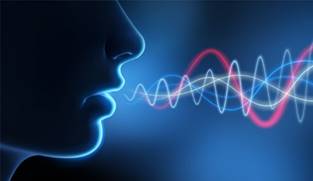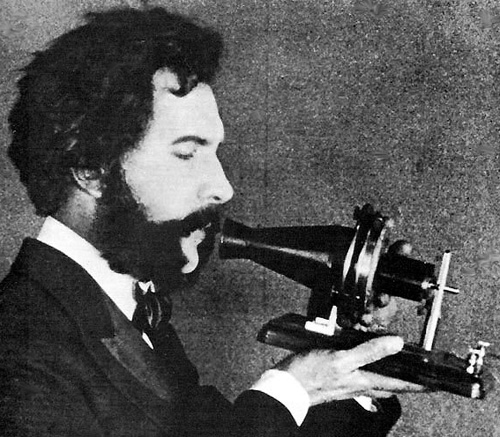Engineering SoundA Journey of Innovation |
 |
Engineering SoundA Journey of Innovation |
 |
 Vocal cords in our larynx vibrate using air from our lungs to create sound waves. These sound waves vibrate our eardrum which is interpreted by the brain. The larynx allows us to control pitch and volume. From grunting, talking to full vocal singing, there is a wide range of sounds humans can produce.
Vocal cords in our larynx vibrate using air from our lungs to create sound waves. These sound waves vibrate our eardrum which is interpreted by the brain. The larynx allows us to control pitch and volume. From grunting, talking to full vocal singing, there is a wide range of sounds humans can produce.
However, people do have limits on the distance sound can travel from the mouth to the ear, 50 yards, 100 yards? Communication over long distances was a challenging engineering problem at the turn of the century. The telegraph was being used to send a dot and dash code over great distances. The next step was to transmit sound.
As you will learn and are experiencing, we have engineered technologies to transmit audible waves for miles. And, we have invented ways to store sound waves.
 Alexander Graham Bell, the inventor of the telephone in 1876, was a scientist and a technologist. Bell taught at schools for the deaf in Boston. His area of research focused on hearing impaired and he worked on ways to visualize the vibrations of speech. Bell knew that sound was a form of energy and sound travels through a medium.
Alexander Graham Bell, the inventor of the telephone in 1876, was a scientist and a technologist. Bell taught at schools for the deaf in Boston. His area of research focused on hearing impaired and he worked on ways to visualize the vibrations of speech. Bell knew that sound was a form of energy and sound travels through a medium.
Sound is made when air molecules vibrate and move in a pattern. This pattern is called a sound wave. It is a form of energy like electricity and light. Sound waves travel through a medium: gases, liquids or solids. Which medium is the best conductor of sound? Does sound travel in space?
Sound waves have a frequency and amplitude. The unit of measure of wave frequency is the hertz (Hz). One wave passing a fixed point in one second is equal to one 1 hertz. Humans can hear frequencies between 0Hz and 20,000Hz.
Frequency tells us about the pitch, the highness or lowness of a sound. Low pitch sounds, like bass notes, are in the low-frequency range. High-frequency sound, above 5000Hz or 5k Hz, are in the treble range.

Amplitude is the sound volume and is measured in decibels. A whisper is around 30 dB, a shout 80 dB. A crack of thunder can send waves at 120 dB. A decibel is a measure of sound intensity.
Bell used smoked glass and needle attached to an eardrum-type apparatus to “see” sound. Today, there are several instruments used to “see” sound.